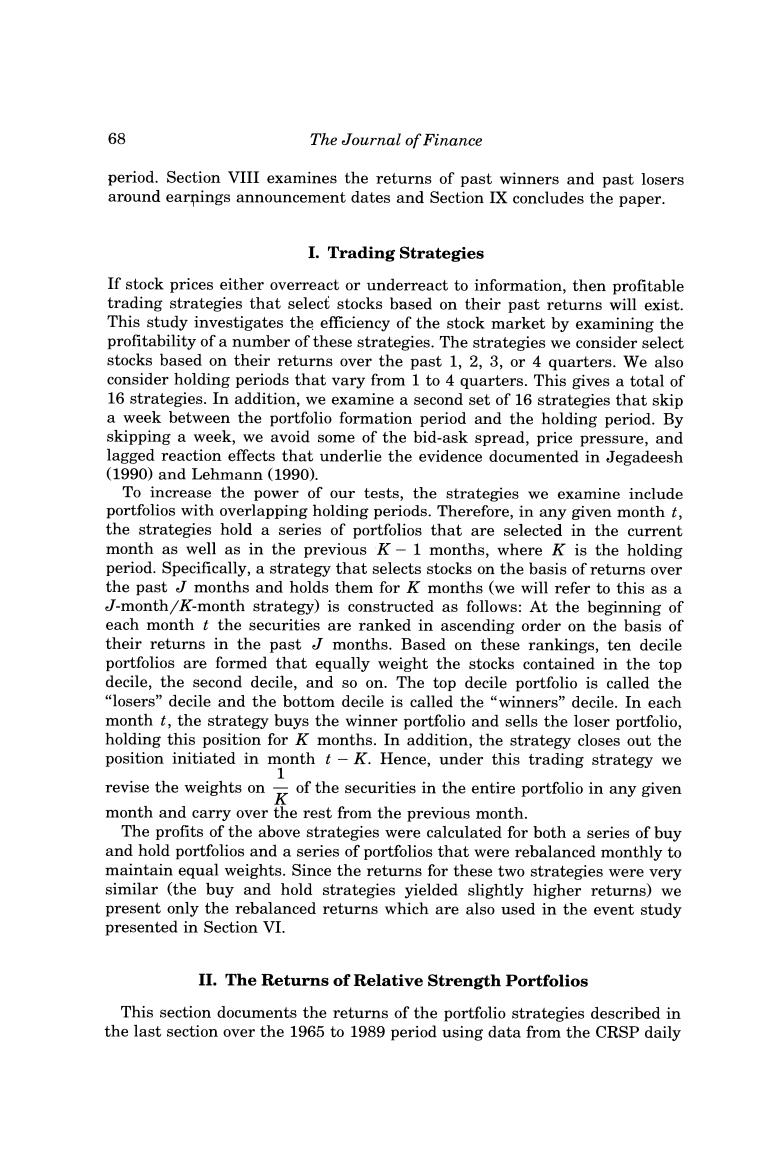正在加载图片...

68 The Journal of Finance period.Section VIII examines the returns of past winners and past losers around earnings announcement dates and Section IX concludes the paper. I.Trading Strategies If stock prices either overreact or underreact to information,then profitable trading strategies that select stocks based on their past returns will exist. This study investigates the efficiency of the stock market by examining the profitability of a number of these strategies.The strategies we consider select stocks based on their returns over the past 1,2,3,or 4 quarters.We also consider holding periods that vary from 1 to 4 quarters.This gives a total of 16 strategies.In addition,we examine a second set of 16 strategies that skip a week between the portfolio formation period and the holding period.By skipping a week,we avoid some of the bid-ask spread,price pressure,and lagged reaction effects that underlie the evidence documented in Jegadeesh (1990)and Lehmann(1990). To increase the power of our tests,the strategies we examine include portfolios with overlapping holding periods.Therefore,in any given month t, the strategies hold a series of portfolios that are selected in the current month as well as in the previous K-1 months,where K is the holding period.Specifically,a strategy that selects stocks on the basis of returns over the past months and holds them for K months (we will refer to this as a -month/K-month strategy)is constructed as follows:At the beginning of each month t the securities are ranked in ascending order on the basis of their returns in the past months.Based on these rankings,ten decile portfolios are formed that equally weight the stocks contained in the top decile,the second decile,and so on.The top decile portfolio is called the “losers'”decile and the bottom decile is called the“winners”decile.In each month t,the strategy buys the winner portfolio and sells the loser portfolio, holding this position for K months.In addition,the strategy closes out the position initiated in month t-K.Hence,under this trading strategy we 1 revise the weights onof the ecrities in the entire portfolio in any given month and carry over the rest from the previous month. The profits of the above strategies were calculated for both a series of buy and hold portfolios and a series of portfolios that were rebalanced monthly to maintain equal weights.Since the returns for these two strategies were very similar (the buy and hold strategies yielded slightly higher returns)we present only the rebalanced returns which are also used in the event study presented in Section VI. II.The Returns of Relative Strength Portfolios This section documents the returns of the portfolio strategies described in the last section over the 1965 to 1989 period using data from the CRSP daily